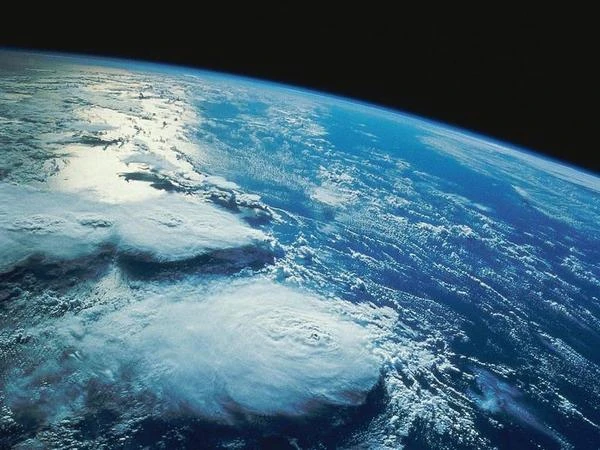
Physically and chemically, water is classified as a mineral, meaning an inorganic, simple substance made up of \(\mathrm{H_2O}\) molecules. Unlike organic nutrients (carbohydrates, lipids, proteins), water provides neither chemical energy nor structural elements directly usable by cells.
Its main function is therefore not to feed the cells, but to constitute the intracellular and extracellular environment essential for life. It acts as a universal solvent, facilitating the transport of nutrients, waste elimination, thermal regulation, and mediation of biochemical reactions.
Water, however, provides dissolved ions (minerals, electrolytes), which participate in physiological functions, but these come from the dissolution of other minerals, not from water itself. In summary, water is an essential vector for life but does not constitute a direct nutritional intake.
In biological systems, water plays a fundamental role in enzymatic catalysis. The active sites of enzymes are often partially hydrated: water is confined, oriented, and functionalized. It allows charge transfers, stabilizes excited states, and sometimes participates as a reactant or cofactor.
In the photolysis reactions of water in photosynthesis, or in cellular respiration (electron chain), water is much more than a backdrop: it is a main actor in energy metabolism.
Water is much more than a simple universal solvent. It plays an active role in the chemistry of living systems and aqueous environments. Thanks to its polarity, its network of hydrogen bonds in perpetual rearrangement (1011 reorganizations per second), and its ability to stabilize transition states, liquid water acts as a true accelerator of chemical reactions.
Unlike many organic solvents (such as hexane or toluene), water interacts directly with reactants and modifies the course of chemical reactions.
Water can influence reactions in three main ways:
Water is not just a "spectator": it is an active participant that shapes chemical reactions at several levels.
In summary: Unlike inert solvents, water can participate directly in reaction mechanisms: through proton transfer (acid-base reactions), by stabilizing ionic intermediates, or by modifying the energy landscape of transition states. It influences not only the kinetics but also the selectivity and thermodynamics of reactions.
At the microscopic scale, liquid water forms a three-dimensional network of hydrogen bonds, constantly reorganizing. This intermediate structure between the order of a crystal and gaseous disorder creates reactive microenvironments that facilitate effective collisions between reactants.
Example 1: Auto-ionization of Water
The auto-ionization of water relies on the transfer of a proton between two molecules via a transient hydrogen bond:
$$2 \, \mathrm{H_2O} \ \rightleftharpoons \ \mathrm{H_3O^+} + \mathrm{OH^-}$$
This transfer is facilitated by the Grotthuss mechanism, in which the proton propagates through the network without moving itself, thanks to the rapid reconfiguration of hydrogen bonds. This phenomenon only exists in a highly structured and mobile liquid medium like water.
Example 2: Diels-Alder Reaction in Aqueous Medium
The Diels-Alder reaction between a diene and a dienophile is significantly accelerated in water compared to organic solvents. This speed gain is due to the hydrophobic effect: non-polar reactants are grouped by water, which tends to exclude hydrophobic compounds from its network. This aggregation pressure increases the probability of effective collision and directs the reaction towards specific products, demonstrating the structuring effect of water on chemical reactivity.
| Reaction | Solvent | Rate Constant (k) | Comment |
|---|---|---|---|
| Ionization of HCl | In Water | Very High | Facilitated by polarity and ion hydration |
| Ester Hydrolysis | In Water | 103 times faster | Active participation of water as a nucleophile |
| SN1 Substitution | Water vs Hexane | Accelerated in Water | Stabilization of the carbocation intermediate |
| Proton Transfer | Water | Almost Instantaneous | Autoprotolytic effect H2O ⇌ H3O+ + OH− |
Source: Data from J. Phys. Chem. B (ACS), Angew. Chemie Int. Ed., and F. Franks, *Water: A Matrix of Life*.
Water possesses a unique set of physico-chemical properties that make it indispensable as a reaction medium and support for life: its high polarity, significant dipole moment (≈1.85 D), exceptional ability to form a dense and dynamic network of hydrogen bonds, its melting and boiling points compatible with a wide range of terrestrial temperatures, as well as its high dielectric constant (≈78.5 at 25 °C) which facilitates ionic dissociation.
These combined characteristics ensure a rare balance between fluidity and structuring, between effective solvation and molecular mobility, allowing water to act both as a universal solvent and an active catalyst. Moreover, its low molar mass and low viscosity favor rapid transport and efficient molecular interactions.
Other molecules, such as liquid ammonia (NH₃), methanol (CH₃OH), or formic acid (HCOOH), have been considered as alternative solvents under extreme conditions, but none combine all the critical properties of water. For example, liquid ammonia is less polar, has a lower dielectric constant, and a less developed hydrogen network. Furthermore, these solvents have much more restricted temperature or pressure ranges compatible with life.
In conclusion, although other liquids could theoretically fulfill some roles of water, no known molecule possesses all the physico-chemical properties that make water such an exceptional medium for complex chemistry and biology. This is why, to date, water remains the irreplaceable molecule under terrestrial conditions.